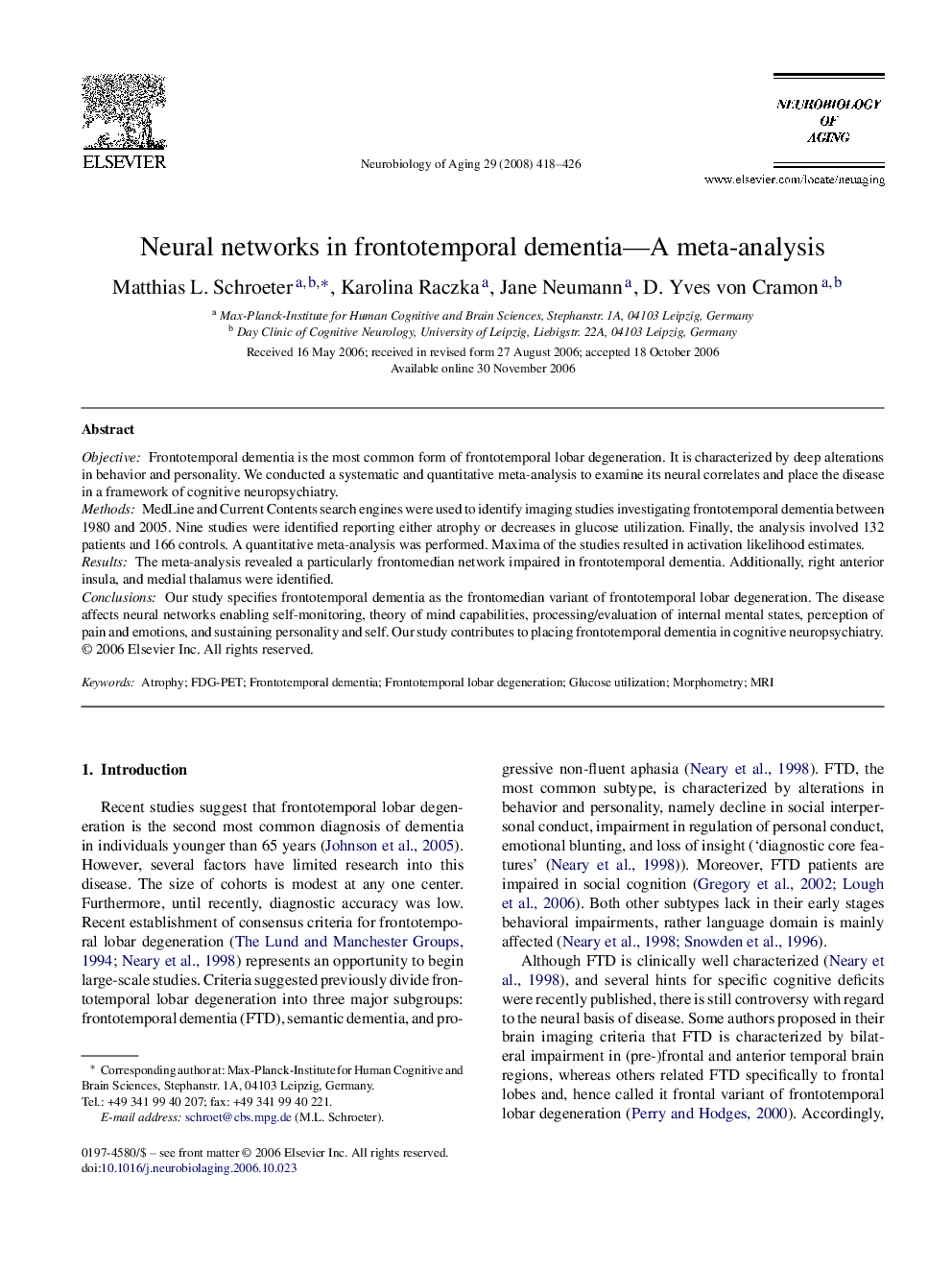| Article ID | Journal | Published Year | Pages | File Type |
|---|---|---|---|---|
| 331312 | Neurobiology of Aging | 2008 | 9 Pages |
ObjectiveFrontotemporal dementia is the most common form of frontotemporal lobar degeneration. It is characterized by deep alterations in behavior and personality. We conducted a systematic and quantitative meta-analysis to examine its neural correlates and place the disease in a framework of cognitive neuropsychiatry.MethodsMedLine and Current Contents search engines were used to identify imaging studies investigating frontotemporal dementia between 1980 and 2005. Nine studies were identified reporting either atrophy or decreases in glucose utilization. Finally, the analysis involved 132 patients and 166 controls. A quantitative meta-analysis was performed. Maxima of the studies resulted in activation likelihood estimates.ResultsThe meta-analysis revealed a particularly frontomedian network impaired in frontotemporal dementia. Additionally, right anterior insula, and medial thalamus were identified.ConclusionsOur study specifies frontotemporal dementia as the frontomedian variant of frontotemporal lobar degeneration. The disease affects neural networks enabling self-monitoring, theory of mind capabilities, processing/evaluation of internal mental states, perception of pain and emotions, and sustaining personality and self. Our study contributes to placing frontotemporal dementia in cognitive neuropsychiatry.
